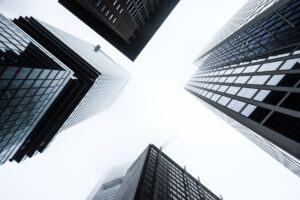One of the cornerstones of the Do-it-Together Development philosophy (and, frankly, one of the main reasons that it brings success to those who practice it) is perspective. All four of the tenets of DIT Development (build your team early, leverage your team’s strengths, protect your time, and manage your project proactively) encourage keeping your eye on the big picture. They also aim to complete your project – as we say – on time, on budget, or better.

Too often, we see developers cut costs in an effort to maximize the return on their investment. While spending less to build seems like a sound way to accomplish that, in our experience it tends to result in two things: a low-quality product, and increased long-term expenses for developers and those who operate their buildings. In essence, the old adage remains true: you get what you pay for. So, it behooves you to focus your money on where it can yield the most return, long-term.
Now, some costs are just what they are. In order to open, you need to satisfy various municipal regulations and building codes. With them come certain unavoidable costs. But, even within those contexts, the discretion of owners and developers can greatly influence construction costs, long-term operational and maintenance costs and, since we are primarily building places where people live, the occupant experience. Which is something that’s easy to forget, that these buildings are built for a purpose, to help people live, work, and play. If your building gets in the way, meaning it negatively impacts the occupant experience, you’re going to deal with headaches and unintended consequences. This always leads to reduced satisfaction, increased operational costs, and lost revenue over time.
Here are a couple of ways that we have found to improve the overall quality of your building and, ultimately, make you more money long-term.
Decrease Operational Cost by Reducing Energy Consumption
Choosing higher-efficiency equipment will most certainly cost more up front. But, those initial costs will be offset and more by the amount of money that equipment will save in operational costs once installed. There are many options for high-efficiency equipment like heating and cooling systems, smart building controls for things like temperature, humidity, lighting, and elevators that use less energy.
Even your windows can reduce your long-term energy consumption. Some windows resist the transfer of heat better than others, which is measured by the window’s u-value. Windows with lower u-value transfer less heat and insulate better. They also cost more than standard windows, but again, your long-term savings will more than justify the added up-front cost.
Enhancing the User Experience
As we stated before, we build places where people live such as apartment buildings, hotels, student housing, and senior living facilities. For these types of building, there are two types of user: the owner/operator of the building, and the tenants/guests who occupy it.
To improve the experience for property owners and operators, there are three main ways to make more money through improving quality. First, using high-quality products that have long maintenance/service cycles. In other words, pay more for better stuff that you don’t need to fix or maintain as often. Also, use products that don’t consume supplies as frequently, or at all. And lastly, try to find products or systems that make your operations more efficient.
It might not seem as obviously beneficial, but spending more up front to improve conditions for the occupants, tenants, and guests of your building can save you money long term as well. Happy people don’t complain. Happy people don’t leave. And, happy people tell other people how happy they are.
So, how do you keep them happy? One way is to invest in more responsive climate control equipment. This is to avoid having hot or cold spots in your rooms, which irritates people. The energy-efficient windows mentioned above will help you avoid hot and cold spots as well.
Water temperature in your bathroom can also cause headaches if you are not investing in equipment that better regulates that. If water is too hot or too cold, or if your water takes too long to heat up or cool off, your occupants will let you know about it, loudly. Which means going to the internet and leaving a negative review. Something as simple as water or room temperature can deter people from choosing your property.
Lastly, offer as many amenities as possible. Simple additions like fireplaces in common areas, designer lighting, a fitness area, robust meeting spaces, and spas, among others, go a long way to delight your guests and tenants. In a residential setting like an apartment complex or senior living facility, that means lower turnover. In a hotel, that means more repeat and referral customers.
For both, it means less time and money spent maintaining and repairing equipment which, ultimately, means more dollars back into your pockets and the pockets of your owners and operators.
This post is the first in a series weighing the benefit of high-quality vs. low bid projects. Stay tuned to this space for more as we explore ways to save you money without sacrificing quality and, in turn, your reputation.

